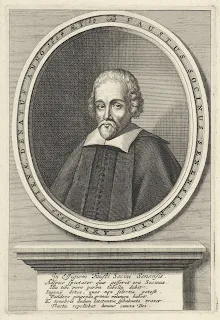Historical and Theological Context
The development of the Doctrine of the Trinity can be traced through centuries of Christian theological discourse, culminating in its formalization during the early church councils, under the influence of Greek and Roman leaders. Central to this doctrine is the concept of homologous, which asserts that the Father, Son, and Holy Spirit are of the same substance or essence. This formulation aimed to reconcile the monotheistic emphasis of the Hebrew Scriptures with the emerging understanding of Yahshua as divine. However, historical controversies such as Arianism and Unitarianism demonstrate persistent challenges to the Trinitarian formulation, questioning its theological coherence and scriptural foundation
In 325 AD, the First Council of Nicaea was convened to address the Arian controversy. The council ultimately condemned Arianism as heretical and formulated the Nicene Creed, which affirmed the co-eternity and co-equality of the Father and the Son, declaring that the Son was "begotten, not made, being of one substance with the Father."
Despite the council's decisions, Arianism continued to have significant influence, especially among certain groups and regions. It persisted in various forms and was a point of contention in subsequent councils and debates.
Unitarianism emerged in the early modern period, gaining significant traction during the Protestant Reformation. It developed as a reaction against the established doctrines of the Trinity and the divinity of Yahshua. Key figures in the history of Unitarianism include:

Fausto Sozzini (1539–1604): An Italian theologian, Sozzini's writings laid the groundwork for what would become known as Socinianism, a form of Unitarianism. He emphasized the use of reason in interpreting the Scriptures and rejected the Trinity.
Influence of Other Faiths
The concept of a triune deity is not unique to Christianity. Historical evidence suggests that the idea of triads of gods can be found in various ancient religions:
- Hinduism: The Hindu Trimurti consists of Brahma (the creator), Vishnu (the preserver), and Shiva (the destroyer). This triad represents three aspects of the divine but maintains that these are not separate gods but different forms of one ultimate reality, Brahman.
- Ancient Egyptian Religion: The Egyptians had a trinity in Osiris, Isis, and Horus, where the family unit represented different aspects of divinity and human experience.
- Greek and Roman Mythology: In both Greek and Roman pantheons, we see groups of three gods or goddesses, such as the Fates and the Graces, who collectively wield significant power.
- Babylonian and Mesopotamian Influences: In ancient Mesopotamia, triadic divine groupings were common, reflecting aspects of cosmic order and divine roles. For example, the Babylonian triad consisted of Anu (sky god), Enlil (wind god), and Ea (water god), each representing distinct yet interconnected aspects of divine authority and natural phenomena.
Biblical Perspective
- Genesis 1:1: "In the beginning God created the heavens and the earth."
Here, "God" is singular—a single entity initiating creation without mention of multiple persons. This simplicity contrasts with the Trinitarian view of God as a complex unity.
- Genesis 1:26: "Then God said, 'Let Us make man in Our image, according to Our likeness..."
- John 17:3:"And this is eternal life, that they may know You, the only true God, and Yahshua whom You have sent."
Yahshua distinguishes between the Father as the only true God and himself as the sent Messiah, implying a relationship that doesn't necessitate equality in essence.
- 1 Corinthians 8:6: "Yet for us there is one God, the Father, of whom are all things, and we for Him; and one Lord Yahshua Christ, through whom are all things, and through whom we live."
This verse distinguishes between God the Father as the ultimate source and Yahshua Christ as the mediator through whom all things exist, reinforcing a hierarchical rather than co-equal relationship.
- Mark 12:29: "Yahshua answered him, 'The first of all the commandments is: 'Hear, O Israel, the LORD our God, the LORD is one."
Yahshua affirms the Shema, emphasizing the oneness of God in response to a question about the greatest commandment. It also indicates His loyalty to His Father as GOD.
- John 14:16 "And I will pray the Father, and He will give you another Helper, that He may abide with you forever."
In conclusion, after careful examination of theological, biblical, and historical perspectives, it becomes evident that the Doctrine of the Trinity is not supported by the clear teachings of scripture nor by logical coherence. The arguments presented against the Trinity highlight several key points:
Biblical Ambiguity: Scriptures emphasizing the oneness of God and the distinct roles of Yahshua and the Holy Spirit do not necessitate a Trinity, one God many personalities. But a Godhead. Verses like Deuteronomy 6:4 and John 17:3 affirm monotheism and Yahshua’s subordinate role to the Father, challenging the Trinity's theological basis.
Historical Development: The formulation of the Trinity evolved over centuries, influenced by Greek philosophical concepts and political agendas. This historical context raises concerns about the purity of doctrinal development and its departure from early Christian teachings.
Philosophical Challenges: The concept of a triune God—a single essence in three persons—presents inherent contradictions in understanding divine unity and identity. Critics argue that this formulation lacks logical coherence and complicates the understanding of Yahvah’s nature.
Alternative Perspectives: Unitarian and modalistic interpretations offer simpler explanations of God’s unity and the relationship between Father, Son, and Holy Spirit. These perspectives emphasize monotheism and reject the necessity of a triune God for faithful Christian belief.
The Doctrine of the Trinity represents a departure from biblical monotheism and introduces theological complexities that are not adequately supported by scripture or reasoned argument. While deeply ingrained in traditional Christian theology, it is essential to critically evaluate doctrines in light of scriptural teachings and historical context. Therefore, based on the examination presented, the Trinity must be regarded as a false doctrine that departs from the fundamental teachings of Yahvah's oneness and the clear biblical portrayal of Yahshua’s relationship with the Father.


Comments
Post a Comment